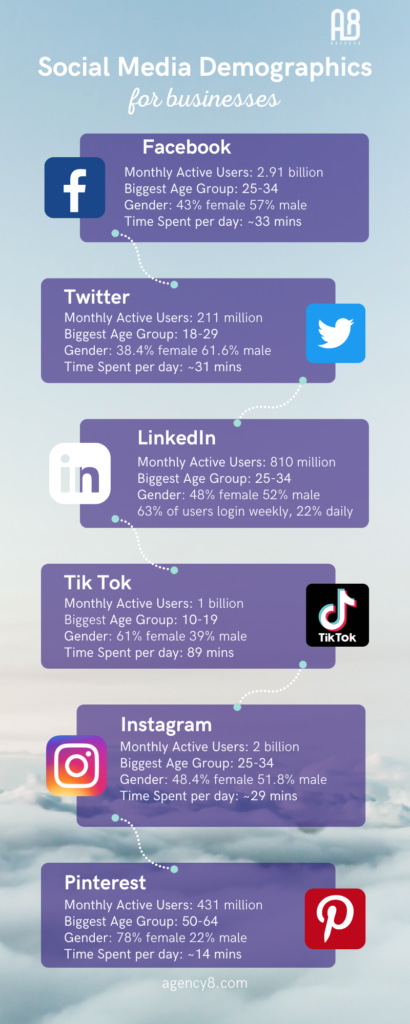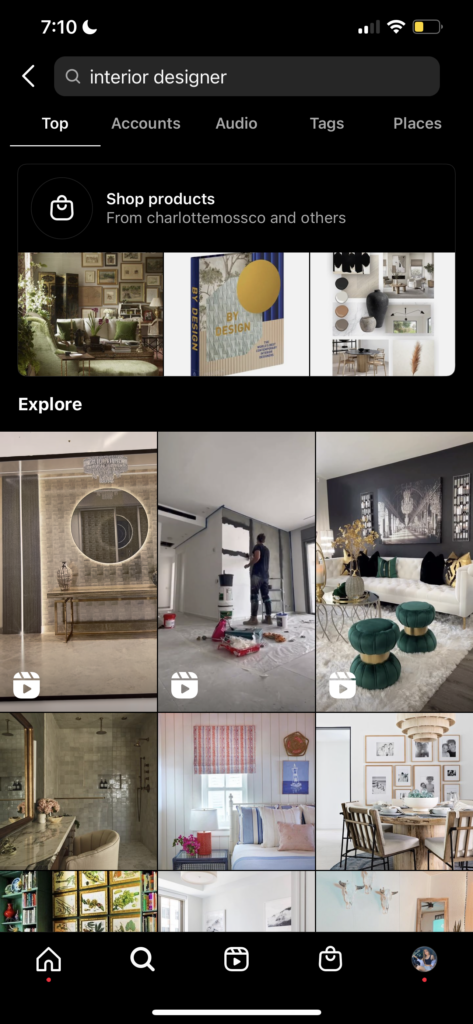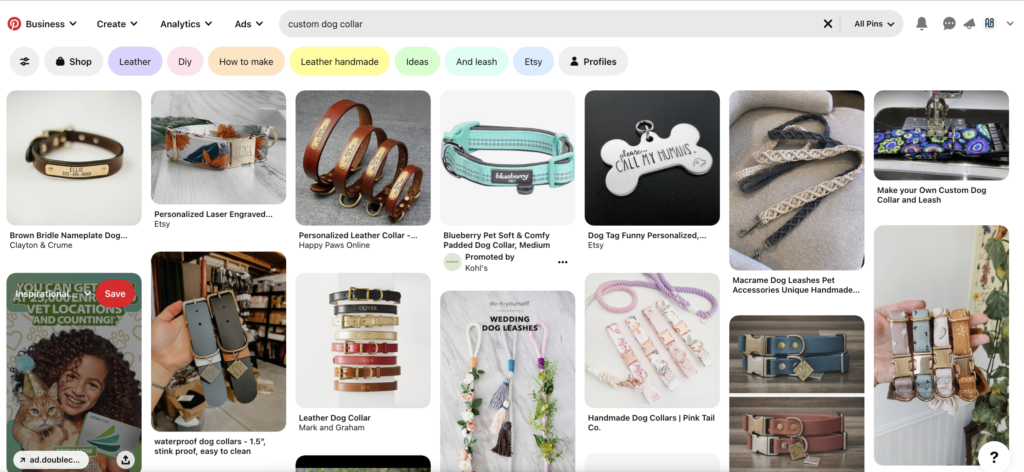As a small business, it’s important to niche down on social media in order to better serve your target audience. When you niche down, you can create content that will resonate with your followers. You can also build relationships with potential customers who are looking for help in your niche. Niching down is also a great way to share your industry knowledge and insights with others.
What is a social media niche?
A social media niche is a topic that often has associated hashtags that go along with it. When you niche down on social media, you’re focusing your content around a specific topic. This can be anything from fashion to beauty to food to travel.
Below every niche are sub-niches. These tend to me more focused than the main niche. For example, within the beauty niche, you could have a sub-niche like natural hair. Or, in the automotive niche you could have sub-niches like Italian cars, JDM, or exotic cars.
Why Niche Down?
Believe it or not, niching down your business can actually help you create a stronger bottom line. By niching down, you’re already starting to limit your competition. Not everyone in your industry will be able to specialize and provide services the way you do. Additionally, the further down you sub-niche your offering, the more challenging it becomes for competitors to imitate you.
On social media, a bigger network isn’t always better. The goals for most small business owners are to increase profits, generate leads, and make more sales. By having a smaller, yet more targeted network, you increase your chances of being able to convert this audience into purchasing customers. Niching down and providing value on social media within that niche can help you foster better client relationships.
Niching down can make marketing and selling to your customers even easier, especially on social media. Because you better understand their pain points, you can create meaningful content that directly addresses them. A smaller audience helps you create better individual relationships with clients. Niching down can also make marketing less expensive because you’re targeting a very specific group of people!
So now that we know why a niche is important, let’s talk about how to do it on social media! It’s actually quite simple. Here are three easy steps to get started:
Step One: Know Your Target Audience
We mentioned above how a smaller target audience that’s niched down can be a valuable asset to your business and help increase your bottom line. The first step to niching down is understanding who your target audience is. Who are you trying to reach with your content? What are their needs and pain points? When you know who you’re trying to reach, you can create content that is specifically tailored to them.
If you’ve never taken the time to create a buyer persona, now might be a great time to start! A buyer persona is a semi-fictional representation of your ideal customers that’s based on data and research. The research that goes into creating a buyer persona can be a valuable asset for your business both on and offline.
Understanding your ideal customer’s demographic information can lead you to the platforms where they spend the most time. It’s important to utilize the platforms that individuals in your target audience use the most. For example, if you sell products aimed towards women in their 50s-60s that have the buying power to purchase a higher-end good, you might check out Pinterest.
By focusing your marketing efforts on the social platform that your audience uses, you can cut costs, tailor the content, and reach more of the people you’re hoping to work with. For example, if you find that most of your customers use Instagram, you can create a marketing campaign for Instagram specifically rather than spending a bunch of money on various platforms.
Here is the demographic breakdown of the commonly used social media platforms:

Knowing your target audience also means knowing what problem it is that they have. Great business owners know that in marketing, you need to focus on the problem you solve rather than the products you sell. The same goes for social media and understanding your customers’ problems and pain points can help guide your content creation. Use your content as a tool to share how your product/service solves their problems and why you can be trusted to make it happen.
Step Two: Identify Your niche
The second step is to identify your niche. Once you know who your target audience is, it’s time to figure out what your niche is. Identifying your niche can be a challenging process – especially when you’re first starting out and you want to sell your product or service to every body. But, trust me, niche markets are are key to success on social media (and in business in general).
There are a few steps to follow and questions to ask yourself in order to determine your niche on social media:
- Consider your passions, skills and interests: what are you good at? Do people come to you looking for advice on specific topics? What skills come naturally to you? How can you communicate those skills on social media?
- Identify customer needs: what is the customer’s motive to buy? What problem are you solving for them? Where can they find answers or solutions to their problems on social media?
- Research the competition: who else in your niche is using social media? What are they posting about? What could you do better/differently? What’s working or not working for them?
- Define your niche: what are the demographics of your customers? What platforms are they using? What accounts are they following? What hashtags should you use to reach your customers?
- Test your content: are people resonating/engaging with my content? Am I focused on informing my followers and not just selling to them? What style of content do they respond to the best (ex. video vs. photos)?
If you’re looking to enter into a specific niche on Instagram, it’s important to do some research on relevant hashtags and how many people are also in your niche. You can do this by first going to your Explore Page (the magnifying glass in the bottom navigation bar) and typing in a search query relevant to your niche. This will bring up some of the top accounts, top hashtags, and top content from your query.
Let’s say, for example, that you’re an interior designer. If interior design is going to be your niche on Instagram, you’ll want to check out the content that others are posting before you start. Or, you might want to even dive deeper into a sub-niche such as contemporary interior design or modern interior design. When you begin to search for these terms, you’ll see how many users have made posts that use the hashtags in your niche. For example, #interiordesigner has 20.1 million posts but #moderninteriordesigner has 10.1k posts. This can show you the number of competitors you’re up against and the volume of posts being made with your niche’s hashtags. The higher the number of posts, the more competition you’ll have.
When it comes to Instagram, or any platform, do your research to see what your competitors are up to first.

Step Three: Create Engaging Content
The next step is creating engaging content that your target audience will actually want to read. This means writing blog posts, making videos, or creating graphics that address their needs and pain points. If you can provide value and help them solve their problems, they’re more likely to stick around and follow you.
Knowing what content to create for your niche requires research. You can start by reading popular blogs in your niche, watching YouTube videos, and following influencers on social media. See what kind of content they’re creating and how their audience is responding to it. This will give you a good idea of the type of content that resonates with people in your niche. You can also look up your niche on Pinterest, Tik Tok, or Instagram to find even more inspiration.
Another great source of inspiration for content ideas is Answer the Public. Here you can type in a topic and the website will give you a list of queries that people are making about that topic. Since you know people are looking for answers to these questions, it can be a good place to start in guiding your niched down content creation. You can choose which country to search in so be sure to select the country in which your business operates. Furthermore, please note that Answer the Public will only let you conduct 2 free searches per day so use them wisely!

For example, let’s say you just started a business selling custom dog collars. You can head over to Answer the Public and type “dog collar” into the search bar. The website will then provide you with a list of questions people are asking about dog collars. One question that comes up is “How to wash a dog collar”. You could quickly make a short form video for Instagram Reels showing customers how to wash their custom dog collars from your business. You could also create an answer to this in an FAQ section on your website.

*Tip: by default, Answer the Public will show you data in a “visualization”. This can be challenging to read so I suggest clicking the “Data” button to get more readable results.

To find more ideas for your dog collar business, you could go to Pinterest and search for “custom dog collars”. This will show you what content others are creating for their dog collar businesses. You could also make this search on Tik Tok or Instagram to find other results. These searches will help give you an idea of how to showcase your products! Also be sure to pay attention to what content businesses and influencers are putting out that works well and what’s not doing so well.

Remember that it’s ok to emulate the content of other businesses but not ok to copy them directly so be sure to put your own spin on what you find.
It’s important to write down your content ideas as you find them. This makes it easier for you to keep your niche in mind when creating content and helps you avoid straying off topic. Once you have a good list of content ideas, you can start creating!
Another thing to keep in mind is not bombarding your audience with sales pitches. This can easily overwhelm your followers and lead to them unfollowing you and no longer engaging with your content. Try to follow the 80/20 rule. This means 80% of your small business content is informative, entertaining, or educational and 20% of your content is geared towards sales.
By following these three simple steps, you can begin to niche down on social media and start growing your small business. Just remember to focus on your target audience, identify your niche, and create engaging content in that niche. If you do these things, you’ll be well on your way to success!
We have a ton of other great social media tips on our blog, so make sure to check them out. And as always, if you need help with anything we’ve talked about today or just want someone to bounce ideas off of, feel free to reach out to us. We’re more than happy to help!






